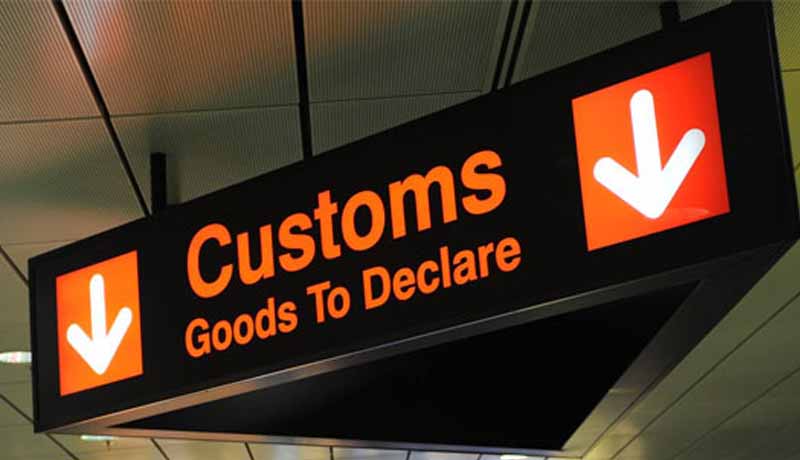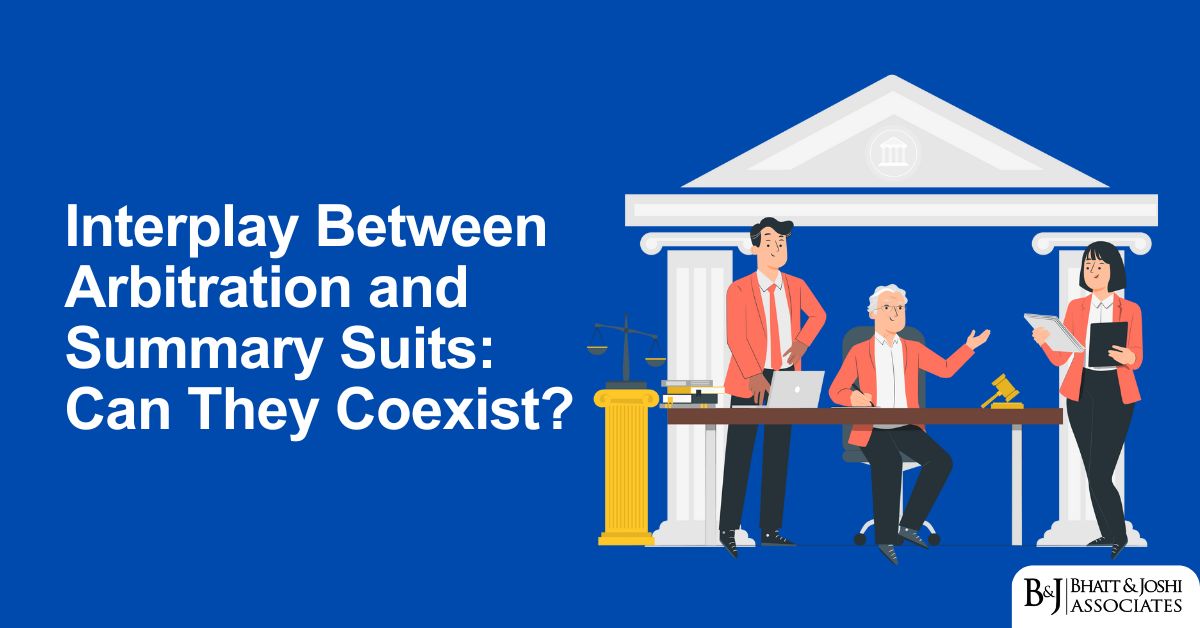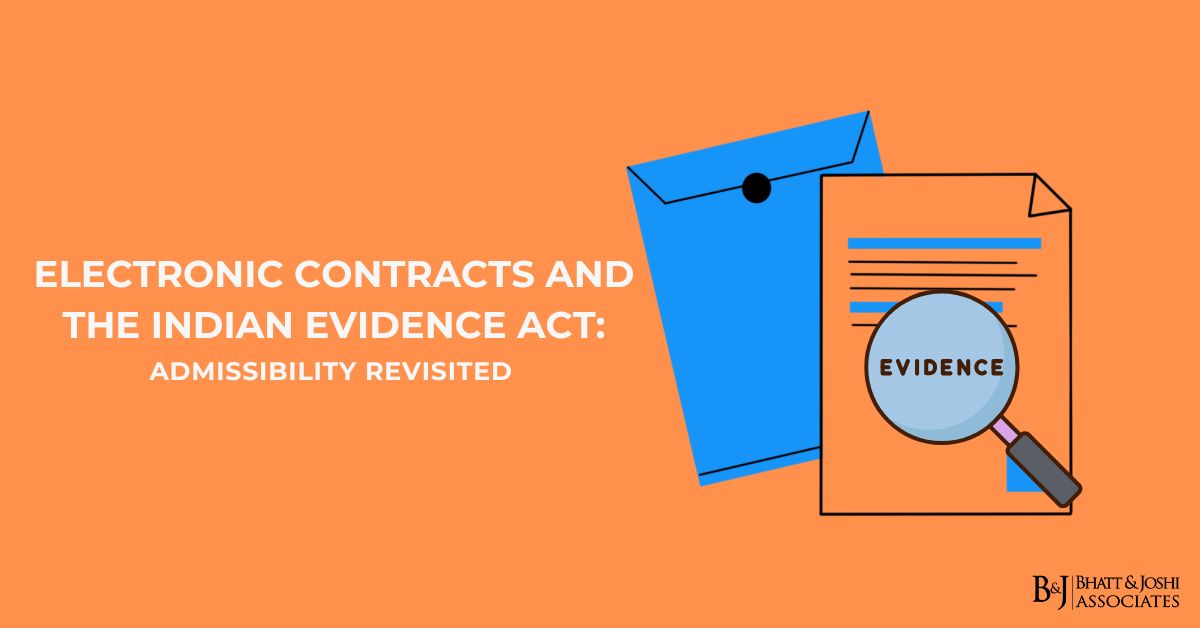
Introduction
The principle of limitation in law embodies the maxim that “long-inoperative claims contain more cruelty than justice.” This fundamental concept underscores the critical importance of statutory time limits for the initiation of legal claims, ensuring that parties do not face indefinite liability and that legal proceedings are conducted within reasonable timeframes. In the realm of customs law, this principle finds expression through specific provisions governing the recovery of duties that have been inadequately levied, short-paid, or erroneously refunded.
The Customs Act, 1962 establishes a structured framework for the recovery of customs duties through Sections 28 and 28AAA, creating distinct mechanisms for different scenarios of duty recovery. These provisions serve as the cornerstone of customs enforcement, balancing the legitimate revenue interests of the state with the rights of importers and exporters to legal certainty and protection from arbitrary enforcement actions.
Legal Framework for Duty Recovery
Section 28: General Provisions for Recovery of of Customs Duties
Section 28 of the Customs Act, 1962 constitutes the primary provision governing the recovery of duties not levied, short-levied, or erroneously refunded [1]. The section establishes a bifurcated approach to limitation periods, distinguishing between cases involving fraudulent conduct and those arising from genuine errors or oversights.
Under Section 28(1), where any duty has not been levied, paid, or has been short-levied, short-paid, or erroneously refunded for reasons other than collusion or wilful misstatement or suppression of facts, the proper officer must serve a show cause notice within two years from the relevant date [2]. This provision reflects the legislature’s recognition that genuine errors in duty assessment should be addressed within a reasonable timeframe, providing certainty to trade participants.
However, the provision adopts a more stringent approach in cases involving fraudulent conduct. Where the duty deficiency results from collusion or wilful misstatement or suppression of facts by the importer, exporter, or their agents or employees, the enhanced limitation period extends to five years from the relevant date [3]. This extended timeframe acknowledges the complexity of investigating fraudulent schemes and the need for adequate time to uncover evidence of deliberate misconduct.
The definition of “relevant date” under the Act varies depending on the circumstances, typically referring to the date of assessment, the date of clearance of goods, or the date of refund, as applicable. This specificity ensures that limitation periods are calculated consistently and objectively.
Section 28AAA: Recovery in Cases of Fraudulent Instruments
Section 28AAA was introduced into the Customs Act through Section 122 of the Finance Act, 2012, addressing a specific lacuna in the existing legal framework [4]. This provision targets situations where instruments such as duty credit scrips, advance licenses, or other trade facilitating documents have been obtained through fraudulent means and subsequently utilized by transferees.
The section provides that where an instrument issued to a person has been obtained through collusion, wilful misstatement, or suppression of facts, and such instrument is utilized by someone other than the person to whom it was originally issued, the duty benefits derived from such instrument shall be deemed never to have been allowed [5]. Consequently, the customs authorities may recover the equivalent duty amount from the original holder of the instrument.
This provision was specifically designed to address judicial pronouncements that limited the recovery of duties to persons directly chargeable with such duties. The landmark case that necessitated this legislative intervention was the Bombay High Court’s decision in Commissioner of Customs v. Jupiter Exports [6].
Judicial Interpretation and Landmark Cases
Jupiter Exports Case: Defining the Scope of Duty Recovery
The Bombay High Court’s decision in Commissioner of Customs v. Jupiter Exports represents a watershed moment in customs law interpretation [6]. The court unequivocally held that duty under Section 28 could only be recovered from “a person chargeable to duty,” which in the context of import duty would be the importer, and in the case of export duty, the exporter.
The court’s reasoning was grounded in the statutory definition of “importer” under Section 2(26) of the Customs Act, which encompasses only persons who cause the import of goods or hold themselves out as importers or owners of imported goods [7]. The judgment emphasized that the demand for duty must be based on law rather than equity or moral considerations, establishing a clear legal principle that duty recovery must have proper statutory foundation.
In the Jupiter Exports case, the facts revealed that the importer had utilized an invalid license, but this circumstance alone could not justify recovering import duty from the exporter who had originally obtained the license through fraudulent means. The court held that since the exporter was not the importer, he could not be made liable for import duty, regardless of his role in the fraudulent procurement of the export license.
East India Commercial Co. Ltd. v. Collector of Customs
The Supreme Court’s decision in East India Commercial Co. Ltd. v. Collector of Customs stands as one of the earliest landmark pronouncements establishing fundamental legal principles regarding licenses obtained through misrepresentation [8]. This case laid the groundwork for subsequent judicial developments in the area of transferable licenses and duty credit scrips obtained through fraudulent means.
The decision established that the customs authorities must carefully examine the chain of title and the specific roles played by different parties in import and export transactions. The court emphasized that liability for customs duty cannot be imposed arbitrarily but must be grounded in specific statutory provisions that clearly define the scope of such liability.
Post-Section 28AAA Judicial Developments
Following the introduction of Section 28AAA, courts have grappled with interpreting the scope and application of this provision. The section has been invoked in numerous cases involving duty credit scrips, advance authorization schemes, and other export promotion instruments where the original authorization was obtained through fraudulent means.
The judicial approach has generally favored a strict interpretation of the provision, requiring clear evidence of collusion, wilful misstatement, or suppression of facts before invoking the extended liability mechanism. Courts have emphasized that the burden of proving fraudulent conduct rests with the revenue authorities and must be established through credible evidence.
Regulatory Framework and Administrative Procedures
Notification and Assessment Procedures
The procedural requirements for recovery of of customs duties under both Sections 28 and 28AAA are governed by detailed rules and notifications issued by the Central Board of Indirect Taxes and Customs (CBIC). These procedures ensure that affected parties receive adequate notice and opportunity to respond to allegations of duty evasion or erroneous claims.
Under Section 28, the show cause notice must specify the amount of duty allegedly evaded or erroneously refunded, the grounds for such determination, and provide the noticee with an opportunity to explain why the demanded amount should not be recovered [9]. The notice must be served within the prescribed limitation period and must contain sufficient details to enable the recipient to prepare an adequate defense.
Pre-Notice Consultation Requirements
Recent amendments to Section 28 have introduced mandatory pre-notice consultation requirements in certain categories of cases [10]. This procedural safeguard ensures that potential disputes are addressed at an early stage and may result in voluntary compliance or settlement before formal enforcement proceedings are initiated.
The pre-notice consultation process involves engagement between the proper officer and the person chargeable with duty, providing an opportunity to clarify factual issues, examine documentary evidence, and potentially resolve disputes through mutual agreement. This procedure reflects the administration’s commitment to promoting voluntary compliance and reducing litigation.
Interest and Penalty Provisions
Section 28AA of the Customs Act provides for the automatic levy of interest on delayed payment of customs duties [11]. The interest rate is prescribed by the Central Government through notifications and currently stands at 24% per annum. This provision serves both as a deterrent against delayed compliance and as compensation to the exchequer for the time value of money.
Penalty provisions under the Act provide additional deterrent mechanisms, with Sections 112, 114, and other relevant provisions prescribing penalties for various categories of contraventions. The quantum of penalty varies depending on the nature and severity of the violation, ranging from monetary penalties to confiscation of goods and conveyance.
Critical Analysis of Legislative Gaps
Absence of Limitation Period in Section 28AAA
One of the most significant deficiencies in Section 28AAA is the absence of any limitation period for initiating proceedings against persons who have obtained instruments through fraudulent means [12]. Unlike Section 28, which provides clear time limits of one year for non-fraudulent cases and five years for fraudulent cases, Section 28AAA contains no temporal restrictions.
This legislative gap creates an inequitable situation where importers and exporters are treated differently under the law. While an importer involved in collusion or wilful misstatement faces a maximum exposure period of five years under Section 28, an exporter who has obtained scrips or instruments through similar fraudulent means faces indefinite liability under Section 28AAA.
The absence of limitation periods in Section 28AAA raises several concerns. First, it violates the fundamental principle of legal certainty, as affected parties cannot determine when their potential liability expires. Second, it creates practical difficulties in evidence gathering and defense preparation, as relevant documents and witnesses may become unavailable over extended periods. Third, it establishes an arbitrary distinction between different categories of customs violations without adequate justification.
Potential for Concurrent Proceedings
Section 28AAA explicitly states that any action taken under this provision shall be without prejudice to any action taken under Section 28 [13]. This formulation creates the possibility of concurrent proceedings against different parties involved in the same transaction, potentially leading to double recovery of the same duty amount.
The proviso to Section 28AAA compounds this problem by permitting simultaneous action against both the person to whom the instrument was issued and the person who utilized such instrument. This approach fails to establish clear priorities for recovery and may result in multiple parties being held liable for the same duty obligation.
Impact on Genuine Trade Participants
The broad language of Section 28AAA may inadvertently affect genuine exporters who have obtained instruments through legitimate means but face allegations of misclassification or other technical violations. For instance, disputes regarding the classification of exported goods under specific tariff headings may be characterized as wilful misstatement, subjecting the exporter to unlimited liability under Section 28AAA.
This situation is particularly problematic in cases involving complex classification issues where reasonable persons may disagree on the appropriate tariff treatment. The absence of limitation periods means that even after successful appeals or settlements, exporters may face fresh proceedings based on the same facts under Section 28AAA.
Recommendations for Legal Reform
Introduction of Limitation Periods
The most urgent reform required in Section 28AAA is the introduction of appropriate limitation periods consistent with those prescribed in Section 28. A maximum period of five years for issuing show cause notices in cases involving collusion, wilful misstatement, or suppression of facts would align the provision with established principles while providing adequate time for investigation of complex cases.
Such amendment would ensure parity between importers and exporters while maintaining the deterrent effect of the provision. The limitation period should commence from the date of utilization of the instrument or the date when the fraudulent conduct is discovered, whichever is later, to account for cases where fraudulent schemes remain concealed for extended periods.
Clarification of Recovery Priorities
The legislature should clarify the priority of recovery proceedings under Sections 28 and 28AAA to prevent double jeopardy and ensure that the same duty amount is not recovered multiple times from different parties. Clear guidelines should specify whether recovery under Section 28AAA bars subsequent proceedings under Section 28 for the same transaction or vice versa.
Additionally, the provision should establish a hierarchy of liability, with primary responsibility resting on the party who directly benefited from the fraudulent instrument and secondary liability extending to other participants only in cases where primary recovery is impossible or inadequate.
Enhanced Procedural Safeguards
Given the potentially unlimited liability under Section 28AAA, enhanced procedural safeguards should be introduced to protect the rights of affected parties. These may include mandatory legal representation, enhanced standards of evidence for establishing fraudulent conduct, and appellate review of decisions to invoke Section 28AAA proceedings.
The provision should also incorporate safeguards against frivolous or vexatious proceedings, requiring senior officer approval before initiating Section 28AAA actions and providing for costs to be awarded against the department in cases where allegations are not substantiated.
Impact on International Trade and Commerce
Effect on Export Promotion Schemes
Section 28AAA has significant implications for various export promotion schemes administered by the Government of India. These schemes typically involve the issuance of duty credit scrips, advance authorization, and other trade facilitating instruments that may become subject to recovery proceedings under the provision.
The uncertainty created by unlimited liability periods may deter participation in export promotion schemes, as exporters may prefer to avoid potential future liability rather than avail themselves of available benefits. This outcome would be counterproductive to the government’s objectives of promoting exports and enhancing India’s competitiveness in international markets.
Compliance and Risk Management
The legal uncertainties surrounding Section 28AAA have prompted significant changes in compliance and risk management practices among exporters and importers. Companies are increasingly investing in specialized legal and compliance resources to navigate the complex requirements of customs law and minimize exposure to recovery proceedings.
These compliance costs may disproportionately affect small and medium enterprises that lack the resources to maintain specialized legal expertise. The resulting compliance burden may create barriers to entry for smaller players and concentrate market power among larger entities with superior legal and compliance capabilities.
International Best Practices
A comparative analysis of international customs laws reveals that most jurisdictions provide clear limitation periods for duty recovery proceedings. The European Union Customs Code, for instance, provides a three-year limitation period for most duty recovery actions, with extensions permitted only in specific circumstances involving fraud or significant irregularities.
Similarly, customs laws in major trading jurisdictions such as the United States, Canada, and Australia incorporate defined limitation periods that balance revenue protection with legal certainty for trade participants. India’s adoption of similar approaches would align its customs law with international best practices and enhance its attractiveness as a destination for international trade and investment.
Conclusion
The framework for recovery of customs duties under the Customs Act, 1962 represents a complex interplay of statutory provisions, judicial interpretations, and administrative practices. While Section 28 provides a generally balanced approach to duty recovery with appropriate limitation periods, Section 28AAA suffers from significant legislative gaps that create legal uncertainty and potential inequity.
The absence of limitation periods in Section 28AAA, the potential for concurrent proceedings, and the broad scope of liability under this provision warrant urgent legislative attention. Reform measures should focus on introducing appropriate temporal restrictions, clarifying Recovery of Customs Duties priorities, and enhancing procedural safeguards to protect the legitimate interests of trade participants while preserving the revenue interests of the state.
The customs law framework must evolve to meet the demands of modern international trade while maintaining effective enforcement mechanisms. Legal certainty, predictability, and proportionality should guide future reforms to ensure that India’s customs law regime supports the country’s broader economic objectives while maintaining high standards of compliance and enforcement.
The ultimate goal should be a customs law regime that facilitates legitimate trade, deters fraudulent conduct, and provides clear guidance to all stakeholders regarding their rights and obligations. Only through such balanced approach can India’s customs law framework effectively serve its dual role of revenue generation and trade facilitation in an increasingly complex global trading environment.
References
[1] The Customs Act, 1962, Section 28, available at: https://taxinformation.cbic.gov.in/content/html/tax_repository/customs/acts/1962_custom_act/documents/Customs_Act__1962_30-March-2022.html
[2] The Customs Act, 1962, Section 28(1), Sub-section (a)
[3] The Customs Act, 1962, Section 28(1), Proviso
[4] The Finance Act, 2012, Section 122 inserting Section 28AAA
[5] The Customs Act, 1962, Section 28AAA(1)
[6] Commissioner of Customs v. Jupiter Exports, 2007 (213) E.L.T. 641 (Bombay High Court)
[7] The Customs Act, 1962, Section 2(26) – Definition of “importer”
[8] East India Commercial Co. Ltd. v. Collector of Customs, 1983 (13) ELT 1342 (Supreme Court)
[9] The Customs Act, 1962, Section 28(1) – Show cause notice requirements
[10] The Customs Act, 1962, Section 28(1)(a) – Pre-notice consultation provisions
[11] The Customs Act, 1962, Section 28AA – Interest on delayed payments
[12] Analysis of Section 28AAA limitation issues, available at: https://vilgst.com/data/articles/Article%20-%20Section%2028AAA.htm
[13] The Customs Act, 1962, Section 28AAA – Non-prejudice clause
Download Full Judgement
- https://bhattandjoshiassociates.s3.ap-south-1.amazonaws.com/judgements/A1962-52.pdf
- https://bhattandjoshiassociates.s3.ap-south-1.amazonaws.com/judgements/Finance Act, 2012..pdf
- https://bhattandjoshiassociates.s3.ap-south-1.amazonaws.com/judgements/The_Commissioner_Of_Customs_E_P_vs_Jupiter_Exports_And_3_Ors_on_6_June_2007.PDF
- https://bhattandjoshiassociates.s3.ap-south-1.amazonaws.com/judgements/East_India_Commerclal_Co_Ltd_vs_The_Collector_Of_Customs_Calcutta_on_4_May_1962.PDF
Written and Authorized by Rutvik Desai













